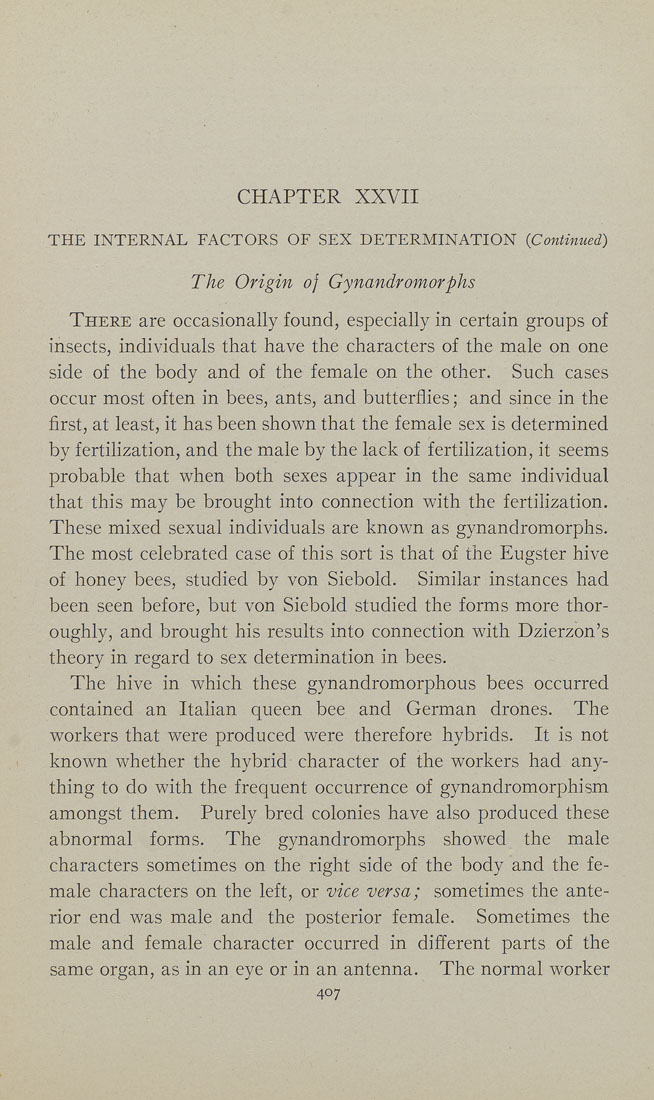CHAPTER XXVII
THE INTERNAL FACTORS OF SEX DETERMINATION {Continued)
The Origin of Gynandromorphs
There are occasionally found, especially in certain groups of
insects, individuals that have the characters of the male on one
side of the body and of the female on the other. Such cases
occur most often in bees, ants, and butterflies; and since in the
first, at least, it has been shown that the female sex is determined
by fertihzation, and the male by the lack of fertihzation, it seems
probable that when both sexes appear in the same individual
that this may be brought into connection with the fertilization.
These mixed sexual individuals are known as gynandromorphs.
The most celebrated case of this sort is that of the Eugster hive
of honey bees, studied by von Siebold. Similar instances had
been seen before, but von Siebold studied the forms more thor¬
oughly, and brought his results into connection with Dzierzon's
theory in regard to sex determination in bees.
The hive in which these gynandromorphous bees occurred
contained an Italian queen bee and German drones. The
workers that were produced were therefore hybrids. It is not
known whether the hybrid character of the workers had any¬
thing to do with the frequent occurrence of gynandromorphism
amongst them. Purely bred colonies have also produced these
abnormal forms. The gynandromorphs showed the male
characters sometimes on the right side of the body and the fe¬
male characters on the left, or vice versa; sometimes the ante¬
rior end was male and the posterior female. Sometimes the
male and female character occurred in different parts of the
same organ, as in an eye or in an antenna. The normal worker
407
|








